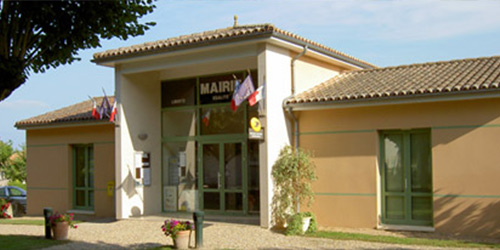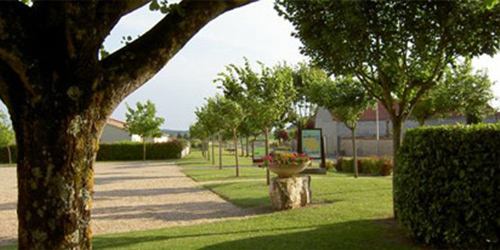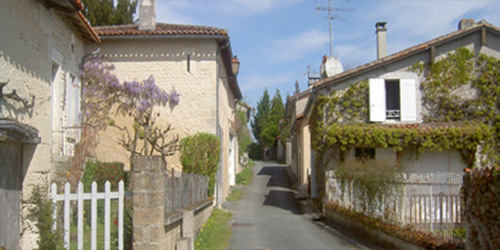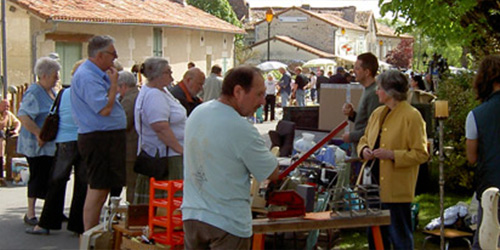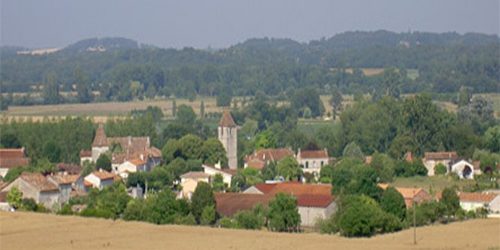Why is Bonnes twinned with Farébersviller in north east France ?
A little history……..
The Maginot Line was constructed several kilometres from the German border and necessitated, in the event of war, numerous local communities to be evacuated. On 1st September 1939, after the German invasion of Poland, a Prefectoral order condemned all of these frontier communes to abandon the land of their forefathers It was a terse command, without any possibility of discussion or appeal; “Depart immediately, and take a maximum of 20kg of baggage and enough food for four days”. So, it was “au revoir” to their cows, calves, pigs and chickens. They left on foot, on carts, and on bikes, and their footwear was soon worn out as they were obliged to use stony paths to avoid the military convoys on the main roads. Nights were spent under the stars or in flea ridden gites, food supplies were hit and miss, and they were caught up in an administrative chaos as they headed into the unknown. The smoke of the locomotives, pulling the animal wagons full of these stateless people towards the interior of France, hid their tears during the long waits. jumelage
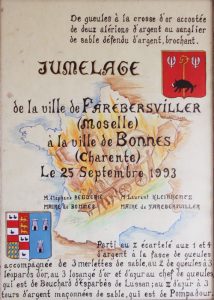 Deposited tired and demoralised on Charentais soil, the villagers of Farébersviller gave the appearance of dirty tramps on their arrival in Bonnes. Nevertheless they were welcomed as warmly as possible, despite the fact that their habits and customs seemed odd at times. The half unexpected arrival of several hundred people (speaking a patois with an uncomfortable resemblance to the language of the enemy) required improvisation, judgement and compromise on the part of the commune elders. But then, as now, everyone made an effort to be tolerant, to be sociable, and to integrate the newcomers.
Deposited tired and demoralised on Charentais soil, the villagers of Farébersviller gave the appearance of dirty tramps on their arrival in Bonnes. Nevertheless they were welcomed as warmly as possible, despite the fact that their habits and customs seemed odd at times. The half unexpected arrival of several hundred people (speaking a patois with an uncomfortable resemblance to the language of the enemy) required improvisation, judgement and compromise on the part of the commune elders. But then, as now, everyone made an effort to be tolerant, to be sociable, and to integrate the newcomers.
For the evacuees, on the other hand, there was nearly a year over which to measure the degree to which their hosts could maintain their initial hospitality and warm heartedness. When the time to return to Farébersviller came at the end of September 1940, the question of repatriation became a dilemma. Those who lived their lives in a dream were saved the genuine anguish of those who had to carry the burden of forced annexation, Germanisation, forced enlistment, deportation and the battle for liberation.
The conditions of the Armistice required all Alsaciens-Mosellans to return home. The day of departure from Bonnes came on 2 October, 1940. This time they climbed up into passenger carriages and were welcomed with open arms at the holding stations along the route by the Germans; babies were bathed and well fed, old ladies were helped down onto the platforms by charming soldiers, and good food awaited all. The Reich wanted to appear generous and thoughtful.
All this was designed to lull them into a false sense of optimism because when they reached their village the sight of their homes in ruins was enough to kill all hope. The bombardment of May 1940 had devastated the locality; it was a sad sight to see their homes demolished, ripped open, without roofs, doors, windows or even furniture! Faced with this mass of rubble it was necessary to start again from nothing and help each other to construct shelter.
Jemelage
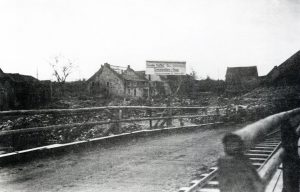 Faced with this disaster the Germans were again generous, providing building materials, distributing blankets, food, seed for crops and cattle to make new herds. But then, on top of all these material worries, came a bitter disillusion which straightaway undermined the moral of the villagers; hardly had they arrived than they were obliged to sign a paper by which they recognised their status as “Volksdeutschen”, that is German citizens.
Faced with this disaster the Germans were again generous, providing building materials, distributing blankets, food, seed for crops and cattle to make new herds. But then, on top of all these material worries, came a bitter disillusion which straightaway undermined the moral of the villagers; hardly had they arrived than they were obliged to sign a paper by which they recognised their status as “Volksdeutschen”, that is German citizens.
On the 10 September 1939 the commune of Bonnes adopted 559 displaced “Farébersvillois”. On 22nd September 1994 she became its twin commune.
